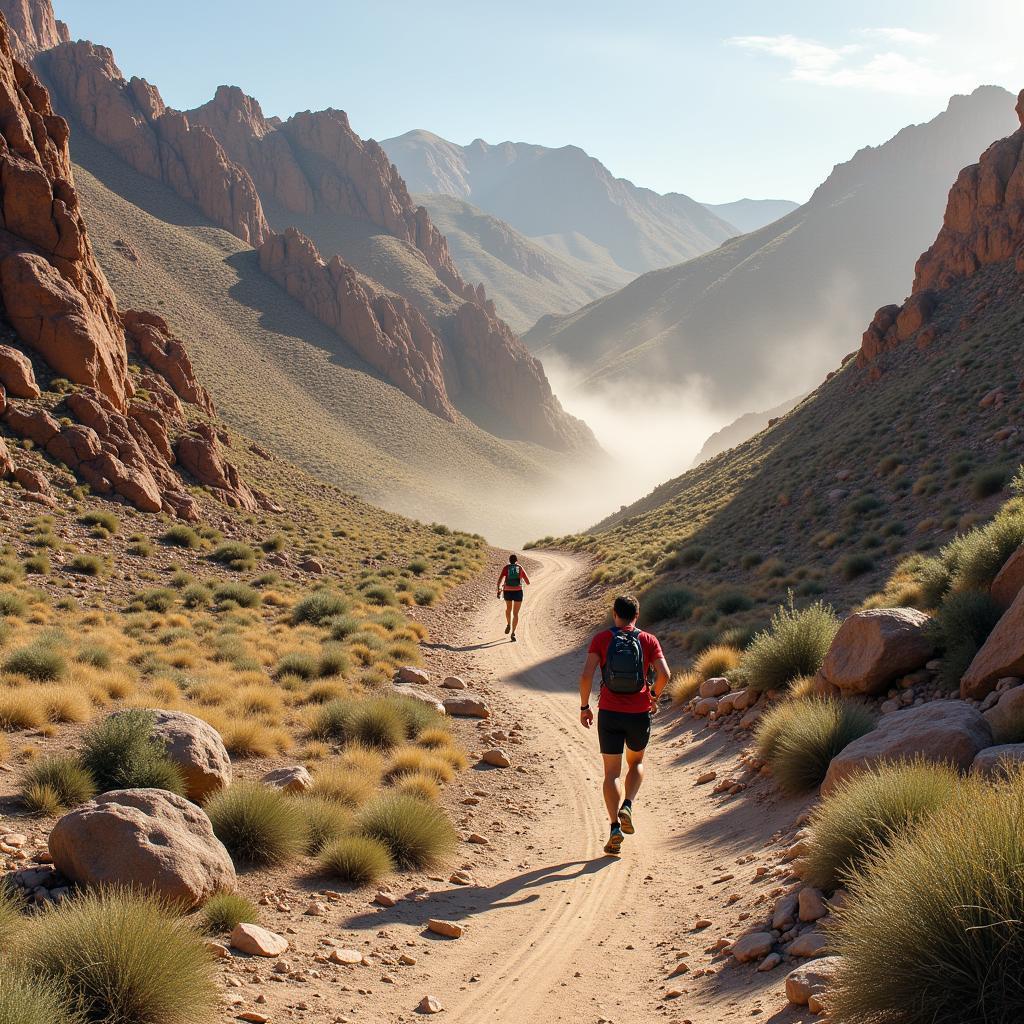The Dead Horse Ultra is a grueling but rewarding ultramarathon, pushing runners to their limits. This guide dives into everything you need to know about the Dead Horse Ultra, from training and gear to race strategy and recovery.
Understanding the Dead Horse Ultra Challenge
The Dead Horse Ultra presents a unique set of challenges for even seasoned ultra runners. The terrain varies significantly, incorporating steep climbs, rocky descents, and sandy stretches. Weather conditions can also be unpredictable, ranging from scorching heat to sudden downpours. Understanding these factors is crucial for successful race preparation.
Terrain and Elevation Changes
The Dead Horse Ultra course boasts a dramatic elevation profile, demanding both physical and mental fortitude. Runners should incorporate hill training and strength workouts into their regimen to effectively tackle the challenging inclines and descents. Practicing on similar terrain beforehand is highly recommended.
Weather Considerations
The unpredictable desert weather can significantly impact race performance. Runners must be prepared for extreme temperature fluctuations and pack accordingly. Layering is key, allowing for adjustments throughout the race. Additionally, staying hydrated is paramount, especially in hot conditions.
 Dead Horse Ultra Terrain Challenges
Dead Horse Ultra Terrain Challenges
Training for the Dead Horse Ultra
Preparing for the Dead Horse Ultra requires a comprehensive training plan that addresses the specific demands of the race. This includes building endurance, strength, and acclimating to the expected weather conditions.
Building Endurance and Strength
A robust training schedule should incorporate long runs, hill workouts, and strength training sessions. Gradually increasing mileage and elevation gain will prepare your body for the race’s demands. Incorporating cross-training activities like cycling or swimming can also be beneficial.
Acclimatizing to the Environment
If you’re not accustomed to desert conditions, acclimatizing to the heat is essential. Begin training in warmer temperatures and gradually increase exposure. This will help your body adapt to the heat and reduce the risk of heat-related illnesses during the race.
 Training for the Dead Horse Ultra
Training for the Dead Horse Ultra
Essential Gear and Equipment
Having the right gear can make or break your Dead Horse Ultra experience. Choosing appropriate footwear, clothing, and hydration packs is vital for comfort and performance.
Footwear and Apparel
Invest in comfortable and well-fitting trail running shoes that provide adequate support and traction. Choose moisture-wicking clothing to stay dry and comfortable, and consider layering options for changing weather conditions.
Hydration and Nutrition
A hydration pack or belt is essential for carrying water and electrolytes. Experiment with different hydration strategies during training to determine what works best for you. Pack energy gels, chews, or other easily digestible snacks to fuel your body throughout the race.
Race Day Strategies and Tips
Having a solid race day strategy can optimize your performance and help you achieve your goals. Pacing yourself, staying hydrated, and managing your energy levels are key to success.
Pacing and Hydration
Start the race conservatively and maintain a steady pace throughout. Avoid starting too fast, as this can lead to early fatigue. Stay hydrated by consistently drinking fluids and replenishing electrolytes.
Nutrition and Energy Management
Consume energy gels, chews, or other snacks regularly to maintain energy levels. Experiment with different nutrition strategies during training to determine what works best for your body.
Recovery After the Dead Horse Ultra
Recovering from the Dead Horse Ultra is crucial for both short-term and long-term well-being. Prioritizing rest, nutrition, and active recovery can facilitate a smooth and efficient recovery process.
Conclusion
The Dead Horse Ultra is a challenging but incredibly rewarding experience. By following a comprehensive training plan, equipping yourself with the right gear, and employing effective race day strategies, you can conquer this iconic ultramarathon and achieve your personal best. Remember, preparation is key to success at the Dead Horse Ultra.
FAQ
- What is the total distance of the Dead Horse Ultra?
- What is the elevation gain of the Dead Horse Ultra?
- When does the Dead Horse Ultra typically take place?
- What type of terrain should runners expect during the Dead Horse Ultra?
- Are there aid stations along the Dead Horse Ultra course?
- What are the mandatory gear requirements for the Dead Horse Ultra?
- What are some recommended training tips for the Dead Horse Ultra?
Need more assistance? Contact us at Phone: 0772127271, Email: [email protected] Or visit us at QGM2+WX2, Vị Trung, Vị Thuỷ, Hậu Giang, Việt Nam. We have a 24/7 customer service team.